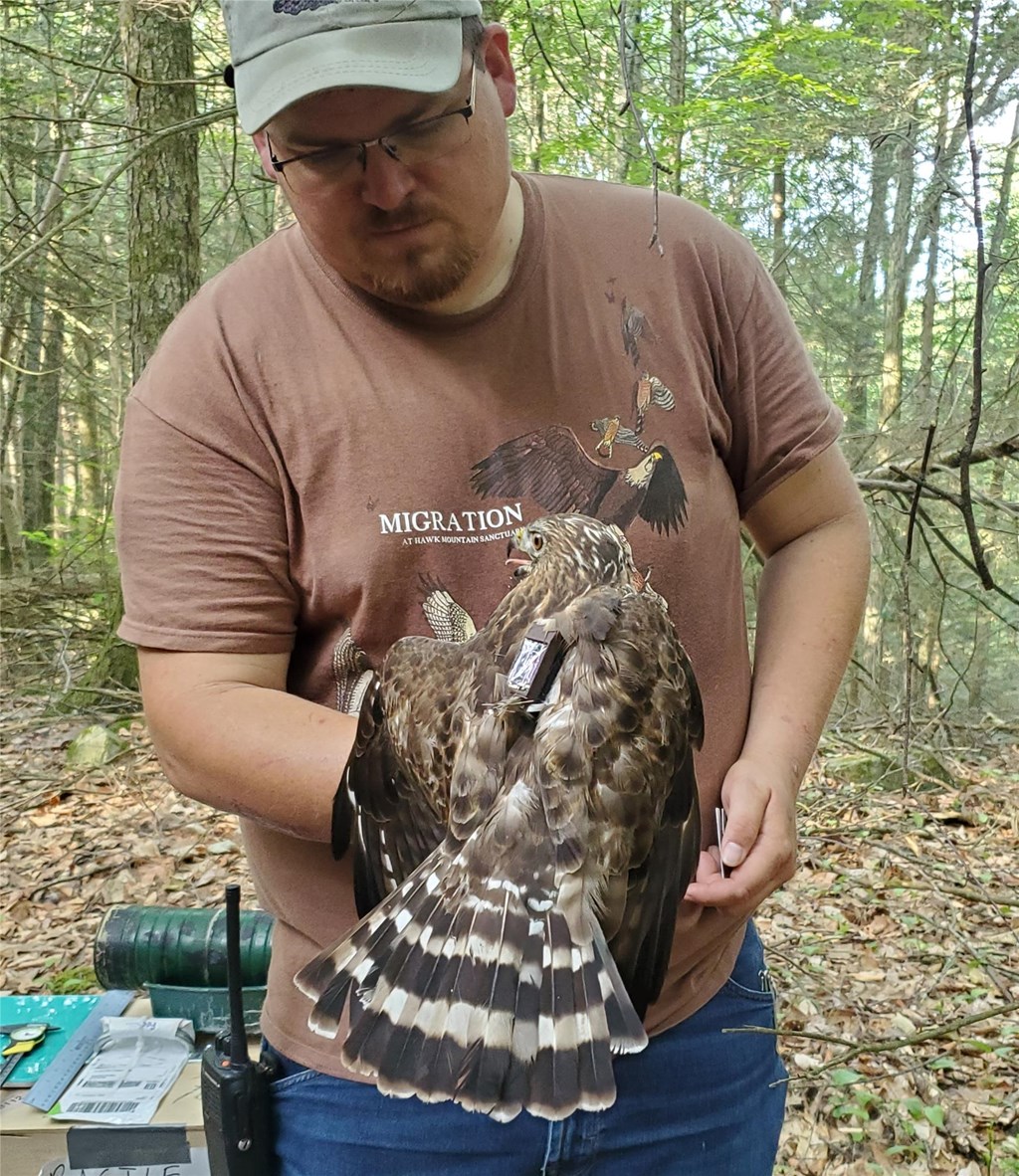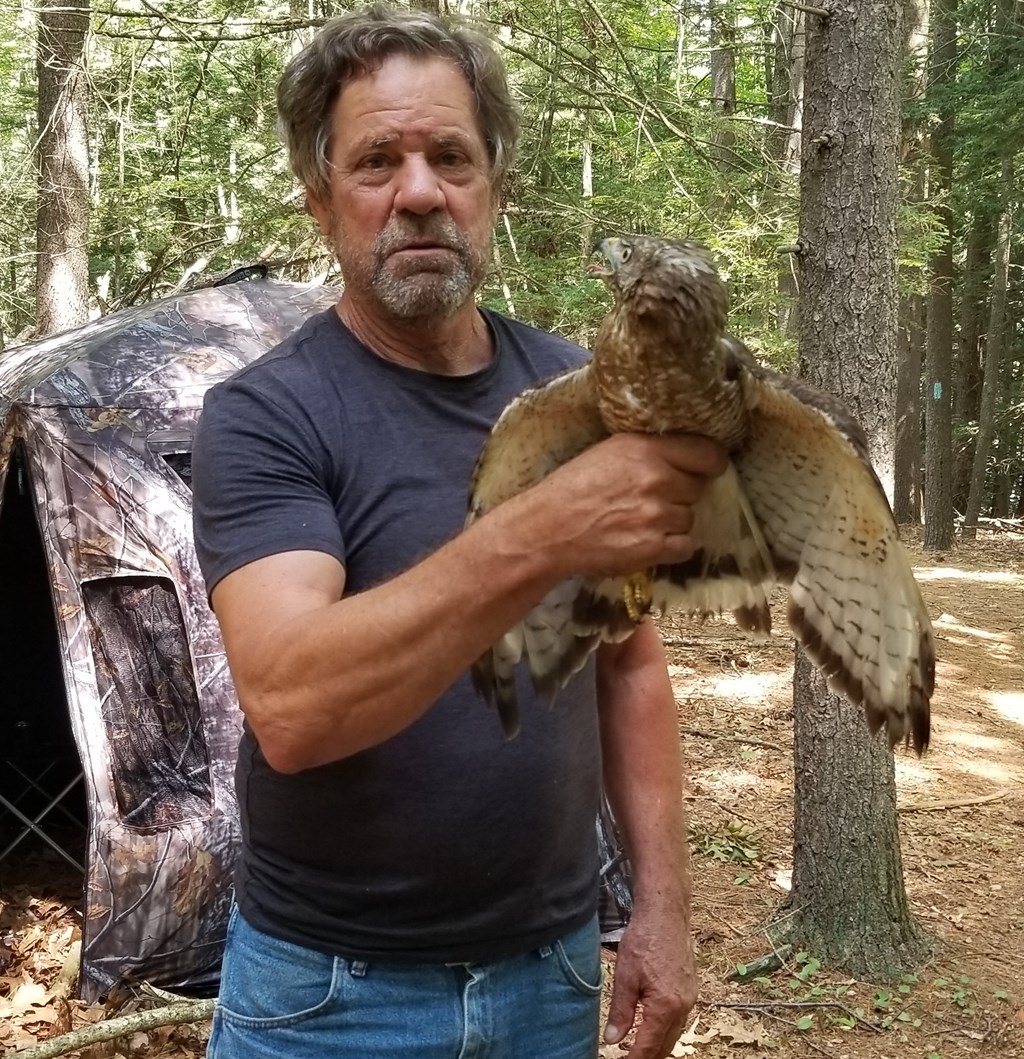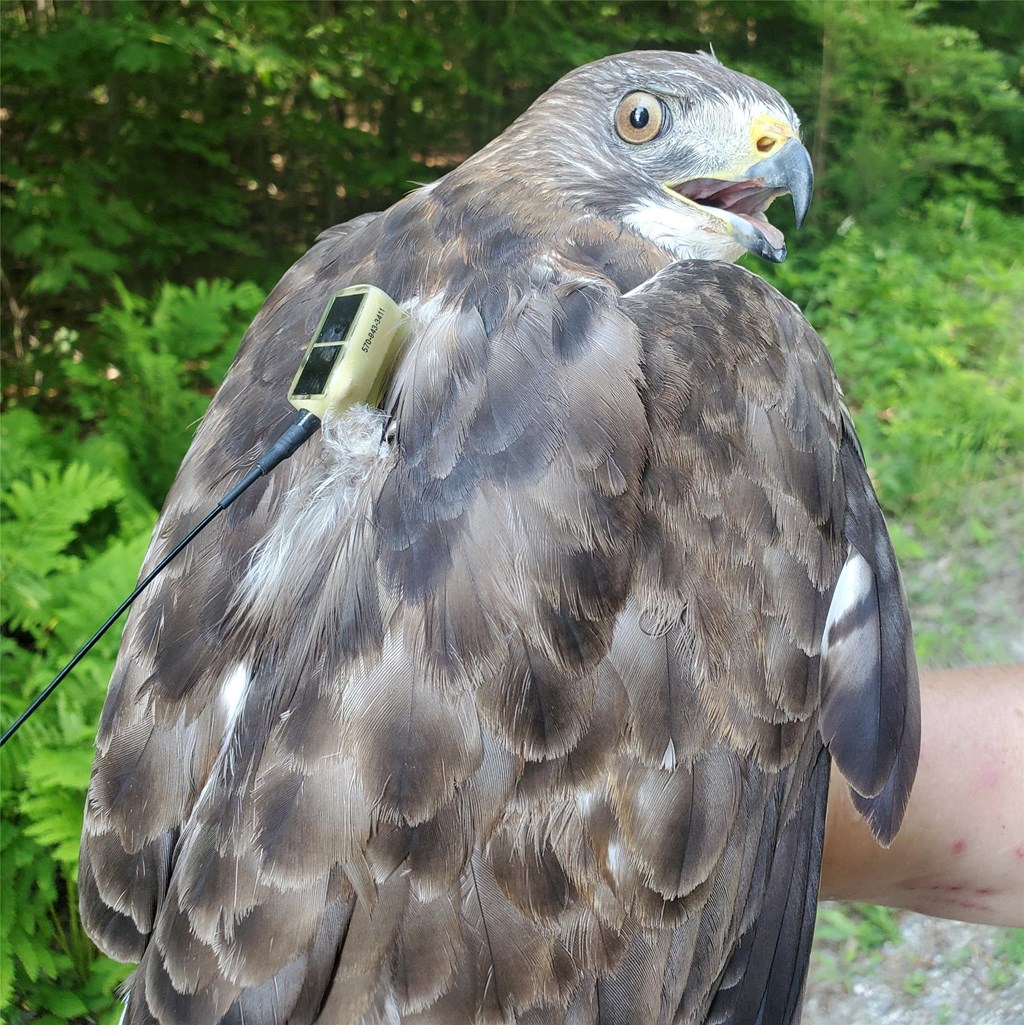The Broad-winged Hawk Project Expands its Wings to Connecticut
Posted on in In the Field by Larry Fischer

My passion for raptors began at an early age, flipping through the pages of Chandler Robbins “Golden Guide to the Birds” and climbing trees to get a glimpse inside of a nest. It was not until the early 1970’s, after moving to western Connecticut with my wife, that I started hawkwatching and getting involved with organized hawk counts at local watchsites.
In the late 1970’s I began surveying for raptor nests as I was curious about what raptors were nesting in my neck of the woods. Finally, in 1995 I applied for and got my own federal bird banding permit, which allowed me to band nestling raptors from the nests I observed. While I continued to survey for all raptor species, I emphasized searching for Cooper’s and sharp-shinned hawk nests. These two species, like the broad-winged hawk, are late season nesters. Although I wasn’t looking for broadwing nests directly, I often encountered them especially in the same mixed woodlands with Cooper’s hawks.
In 2015 and 2019, after attending two NorthEast Hawk Watch (NEHW) conferences and hearing presentations from Rebecca McCabe and Laurie Goodrich on the research being done on broad-winged hawks at Hawk Mountain Sanctuary Association, I was eager to get involved. I approached Laurie and told her about the work I was doing in Connecticut with broadwings and that I was willing to help. In late 2019, Laurie reached out and informed me that the Broad-winged Hawk Project was planning to expand their research into New England in 2020. However, when spring 2020 finally came, the project was put on hold due to the pandemic.

As spring 2021 approached, plans to expand the research into Connecticut and New Hampshire were a go! Hawk Mountain Biologists Bracken Brown and David Barber arrived on a hot June day, and we set out with the goal to trap and deploy transmitters on three adult broad-winged hawks.
About a half hour after arriving at the first nest site, the nets, owl lure, and trapping blind were set up. We did a radio check, and then I went back to my Jeep; Bracken and David went to the trapping blind. I could see the nets from my Jeep, and within five minutes a broadwing seemingly appeared out of nowhere and was in the net like some sort of silent missile. I never expected that it would be so quick! It reminded me of the first goshawk I caught in a similar fashion—more time to set up nets than to catch the hawk—although goshawks let you know they’re coming in.
This 428-gram female was named “C.U. Home” in honor of the three founding members of NEHW; Currie, Hopkins, and Merserau, all three of which had passed away in recent years.
We moved to the next nest site, and within 15 minutes after setting up the mist nets and playing the lure call, a broadwing flew in, whistling as it darted above the treetops. It wasn’t long until the bird was caught, and just like that our second broadwing of the day was banded and received a new transmitter.

On a roll, we decided to try a third nest site in hopes of deploying the last transmitter on a male. After 20 minutes or so in the blind with the squawking of crows in the treetops, I got a call from Bracken on the radio, “We got a bird!” The newly tagged adult male, named Firoke (pronounced Fir-oke; named after NEHW members Fischer, Roberts, and Kellogg) was processed and affixed with a lightweight 5-gram transmitter.
It had been a very good day, with three birds trapped and all transmitters deployed. I learned a lot, and I enjoyed the camaraderie of Bracken and David. It is always such a pleasure to spend time with friends, however new, that share the same passion for these magnificent birds.
To follow our newly tagged birds as they migrate south this fall, visit hawkmountain.org/birdtracker. If you would like to support this important research effort, click here to donate!